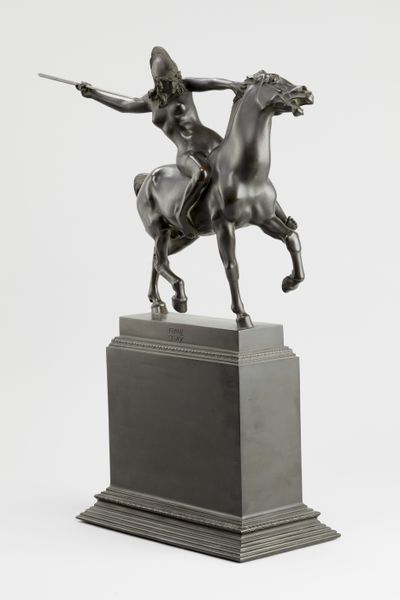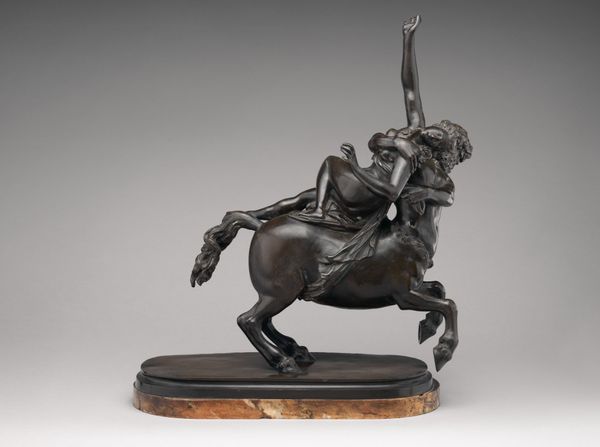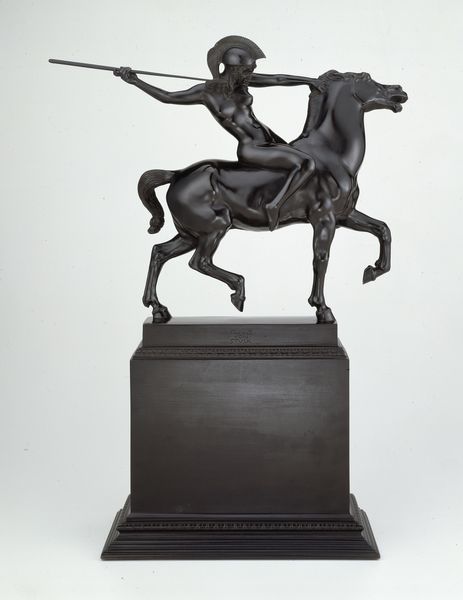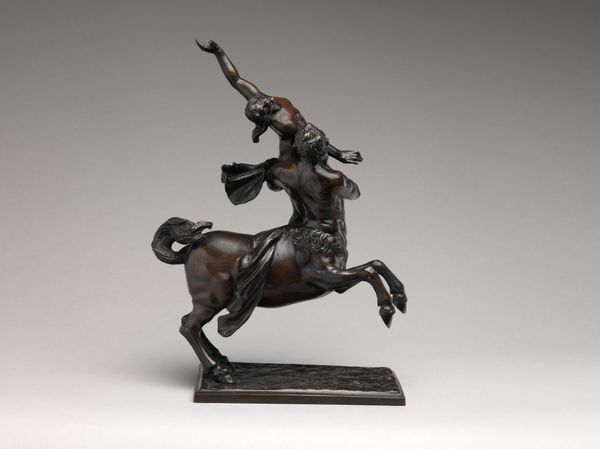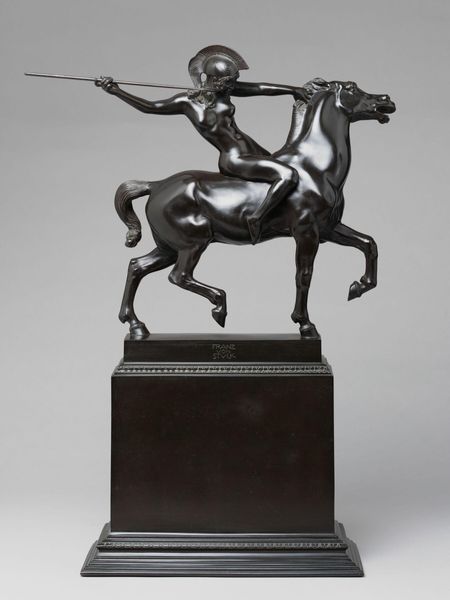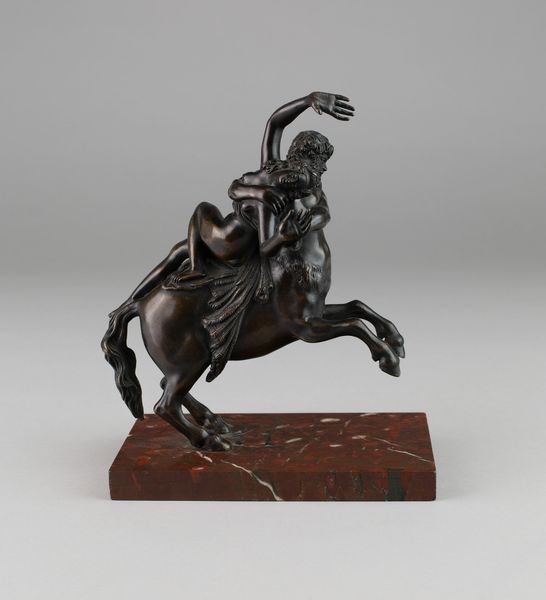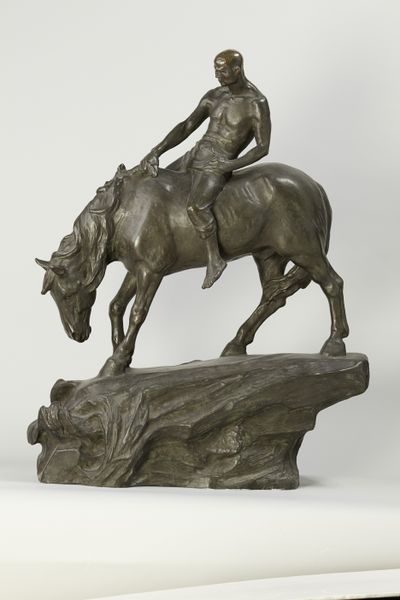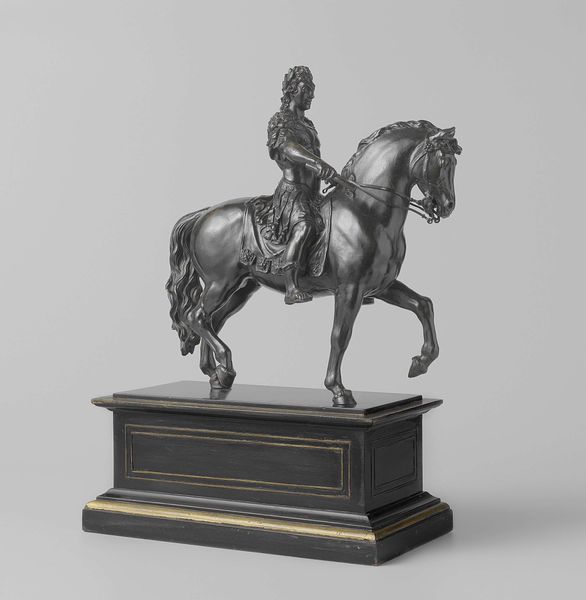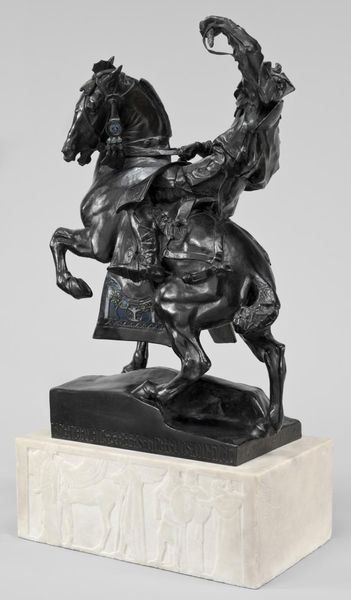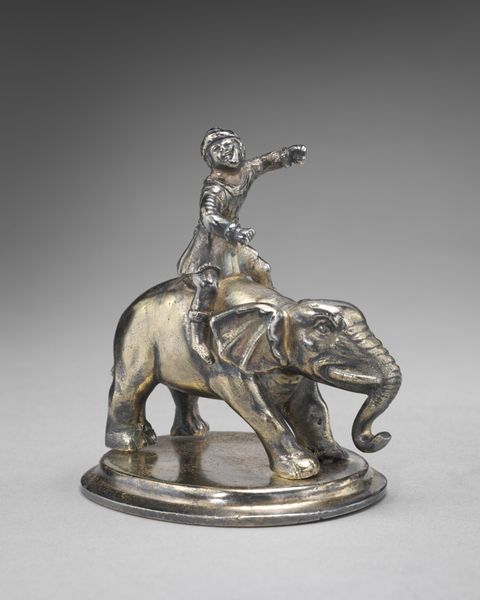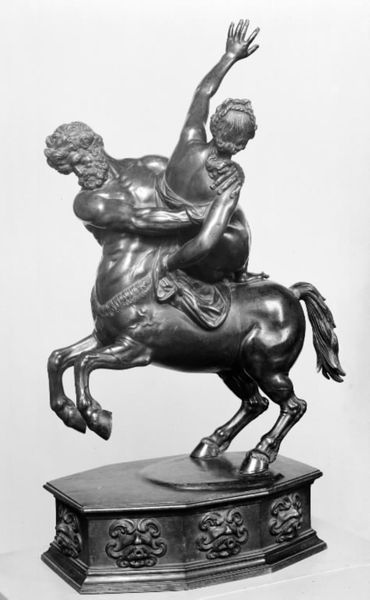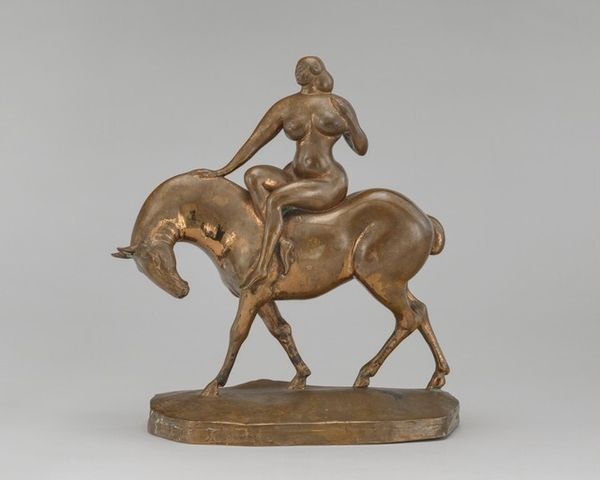
bronze, sculpture
#
allegory
#
baroque
#
sculpture
#
bronze
#
figuration
#
sculpture
#
history-painting
Dimensions: height cm, width cm, depth cm
Copyright: Rijks Museum: Open Domain
Editor: This bronze sculpture, titled "Nessus abducting Deianeira," believed to have been made sometime between 1640 and 1800 by Caspar Gras, really captures a sense of frantic motion, doesn’t it? The way Deianeira is reaching upwards suggests struggle. What sort of story is being told here? Curator: Indeed, it is all about power dynamics! Consider the centaur, Nessus. He's not merely transporting Deianeira; he's 'abducting' her. The sculpture becomes a potent symbol of masculine power and the vulnerability of women, prevalent themes visualized and consumed within a society grappling with its own hierarchical structures. Where would a piece like this be displayed, and what does that say about who it was meant for? Editor: It feels almost staged, doesn’t it? I can imagine it displayed in a wealthy collector’s home… How does knowing this would be a decorative piece alter how we perceive its original context? Curator: Precisely! Display context radically alters our perception. Commissioned by the elite, perhaps to flaunt their access to classical themes and superior status? It transforms the scene into a status symbol, divorced somewhat from the raw emotionality of the myth itself. We must acknowledge how such art reinforced and naturalized social stratifications. Notice how even Deianeira's pose becomes an objectified display, rather than purely a portrayal of suffering. Editor: So, we’re not just looking at a mythological scene but also a carefully crafted statement about social standing at the time it was displayed? Curator: Absolutely! Understanding the societal conditions enables us to decipher beyond the artistic mastery. The statue gives voice to gendered ideas, and, ultimately, speaks volumes about the period’s value system. It is quite sobering when viewed with today's awareness. Editor: It certainly changes how I see it. I guess art is rarely just “art” then. Curator: Indeed, every artwork carries a story far deeper than what's visible to the casual eye!
Comments
No comments
Be the first to comment and join the conversation on the ultimate creative platform.
